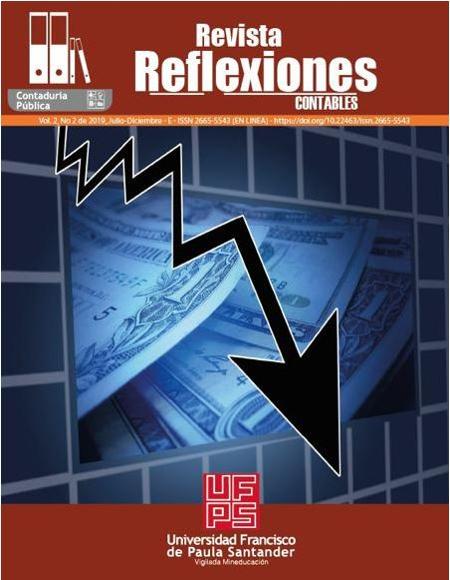The agricultural production of Toledo's farmers
La producción agrícola de los campesinos de Toledo
Main Article Content
The rural population in Colombia is made up of peasants, the vast majority of whom are considered poor, due to the lack of resources and the income generated by national government aid. The rural population of Toledo Norte de Santander in 2015 was seriously affected by high levels of poverty due to displacement and lack of opportunities to work and cultivate their land. Objective: To identify the shortcomings of the peasants of Toledo N. de S. in their production process. Methodology: The following research is explanatory because it shows a possible solution to the existing problem in the academic training of the peasants thrown out by the surveys carried out on the farmers of Toledo Norte de Santander. Results: Once this research has been carried out, we have enough and necessary information that allows us to get to know more deeply the problem of lack of education towards the peasants of Toledo Norte de Santander, taking into account the shortcomings in the lack of commitment On the part of the national government that does not have in mind the needs of citizens and peasants.
Downloads
Article Details
Alcaldía de Toledo, (2019). Toledo. Recuperado de http:// toledonortedesantander.gov.co/index.shtml
Altieri,M. & Toledo,V.M.(2011).La revolución agroecología en Latinoamérica. Socla. Recuperado de https://www.ucm.es/data/cont/media/www/pag-104576/3.%20La%20revoluci%C3%B3n%20agroecol%C3%B3gica%20en%20Latinoam%C3%A9rica%20(M%20iguel%20Altieri%20y%20Victor%20Toledo).pdf
Cruz, et al. (2018). Modo de apropiación de la naturaleza en las unidades de producción campesinas de amaranto y maíz en Tochimilco, Puebla, México. Nova Scientia, 10 (20). Recuperado de https://www.redalyc.org/journal/2033/203358383032/html/
Departamento Nacional de Estadística. (2019). Campesinos de Toledo. Disponible en http://www.dane.gov.co/
Ministerio de Salud y protección (2019). Plan de desarrollo territorial del municipio de Toledo. tomado de http://www.sisubregionalns. gov.co/files/sid Desarrollo_ territorial/PMD/ SurOriental/PDM_T OLEDO_2016-2019.pdf
Naciones Unidas, (1982). Campesinado y desarrollo agrícola en Bolivia. CEPAL Recuperado de https://repositorio.cepal.org/server/api/core/bitstreams/df61a32d-bf3d-4a4f-b298-a3ebbbab4fbe/content
Perez-Magaña,A.(2008)Conocimiento y estrategias campesinas en el manejo de los recursos naturales. Ra Ximha 4(2), 183-213.Recuperado de https://www.redalyc.org/pdf/461/46140210.pdf
Serrano-Ruiz, J. & Ramiro-López, L. (2012). Manual para la formulación y ejecución de planes de educación rural. Ministerio de Educación. Recuperado de http://www. mineducacion.gov.co/l7 59/articles-329722_ archivo _pdf Manual. pdf
Vallejo-Nieto,M.I. Gurri-García, F.D. & Molina-Rosales, D.O.(2011). Agricultura comercial, tradicional y vulnerabilidad en campesinos. Política y cultura (36). Recuperado de https://www.scielo.org.mx/scielo.php?script=sci_arttext&pid=S0188-77422011000200004
Villarreal, N. (s.f.). Desarrollo rural género y ciudadanía. Universidad Nacional de Colombia Recuperado de https://repositorio.unal.edu.co/handle/unal/47203







